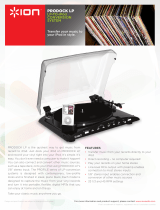
Table of contents - 3
TABLE OF CONTENTS
Register your Acer product ......................... 2
Manage your registered products ............... 2
First things first 6
Your guides ............................................. 6
Basic care and tips for using your
computer.................................................. 7
Turning your computer off........................... 7
Taking care of your computer ..................... 7
Taking care of your AC adapter .................. 8
Cleaning and servicing................................ 8
Your Acer notebook tour 9
Screen view ............................................. 9
Keyboard view ....................................... 11
Left view ............................................... 12
Information on USB 3.0............................. 12
Right view ............................................. 13
Base view .............................................. 14
Using the keyboard 16
Lock keys............................................... 16
Hotkeys ..................................................... 16
Windows keys........................................ 18
Touchpad 19
Touchpad basics ................................... 19
Touchpad gestures................................ 19
Recovery 21
Creating a factory default backup.......... 21
Backing up your wireless and LAN
drivers.................................................... 24
Restoring your computer ....................... 24
Reset this PC and keep my files ............... 24
Reset this PC and remove everything ...... 25
Using a Bluetooth connection 28
Enabling and disabling Bluetooth .......... 28
Enable Bluetooth and add a device .......... 28
Connecting to the Internet 30
Connecting to a wireless network.......... 30
Connecting to a wireless LAN................... 30
Connecting with a cable ........................ 34
Built-in network feature ............................. 34
Connecting to a cellular network ........... 34
Acer Bluelight Shield 35
Acer ProShield 37
Overview................................................ 37
Setting up Acer ProShield ..................... 37
Personal Secure Drive .............................. 39
Credential Manager ............................... 40
Fingerprint Registration* ........................... 40
Data Protection ...................................... 41
Data Removal ........................................ 41
Securing your computer 42
Using a computer security lock.............. 42
Using passwords ................................... 42
Entering passwords .................................. 43
BIOS utility 44
Boot sequence....................................... 44
Setting passwords ................................. 44
Power management 45
Saving power ......................................... 45
Battery pack 47
Battery characteristics ........................... 47
Charging the battery ................................. 47
Optimizing battery life ............................... 48
Checking the battery level......................... 49
Battery-low warning .................................. 49
Traveling with your computer 50
Disconnecting from the desktop ............ 50
Moving around ....................................... 50
Preparing the computer ............................ 50
What to bring to meetings ......................... 51
Taking the computer home .................... 51
Preparing the computer ............................ 51
What to take with you................................ 52
Special considerations .............................. 52
Setting up a home office ........................... 52
Traveling with the computer................... 53
Preparing the computer ............................ 53
What to take with you................................ 53
Special considerations .............................. 53
Traveling internationally......................... 53
Preparing the computer ............................ 54
What to bring with you .............................. 54
Special considerations .............................. 54
Memory card reader 56
Connectivity options............................... 56
Video and audio connectors 58
Universal Serial Bus (USB) 59
HDMI 60
Frequently asked questions 62
Requesting service ................................ 64
Tips and hints for using Windows 10 ..... 65
How do I get to Start? ............................... 65
How do I turn off my computer?................ 65
How do I unlock my computer?................. 65




















